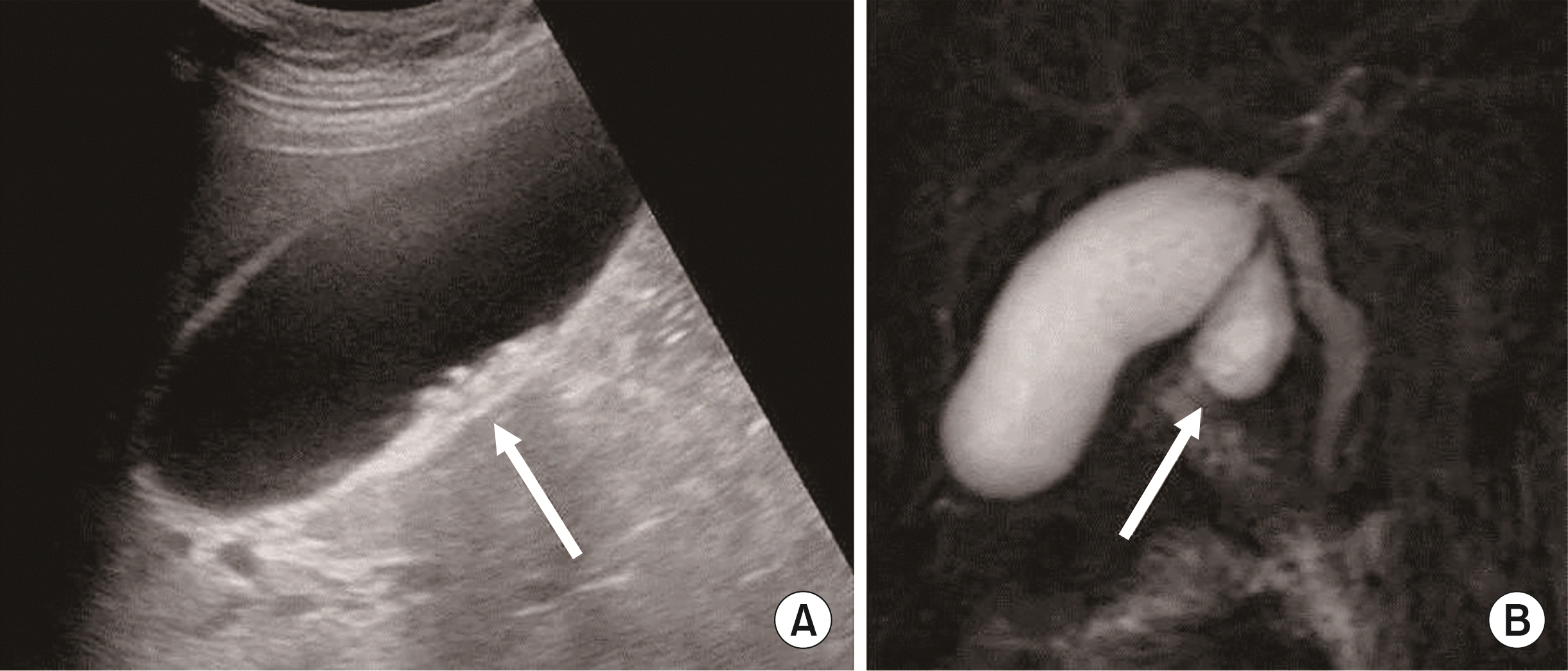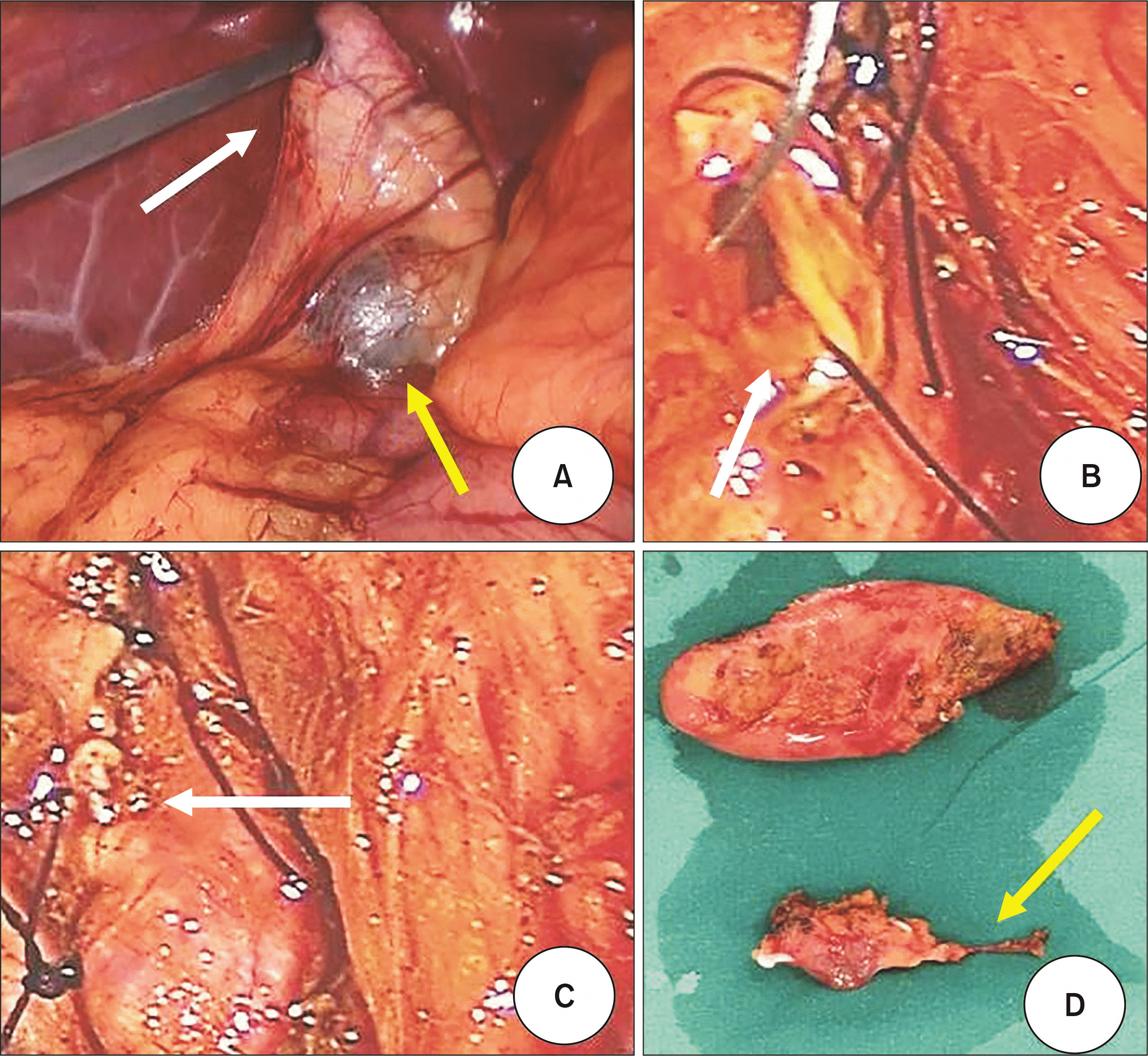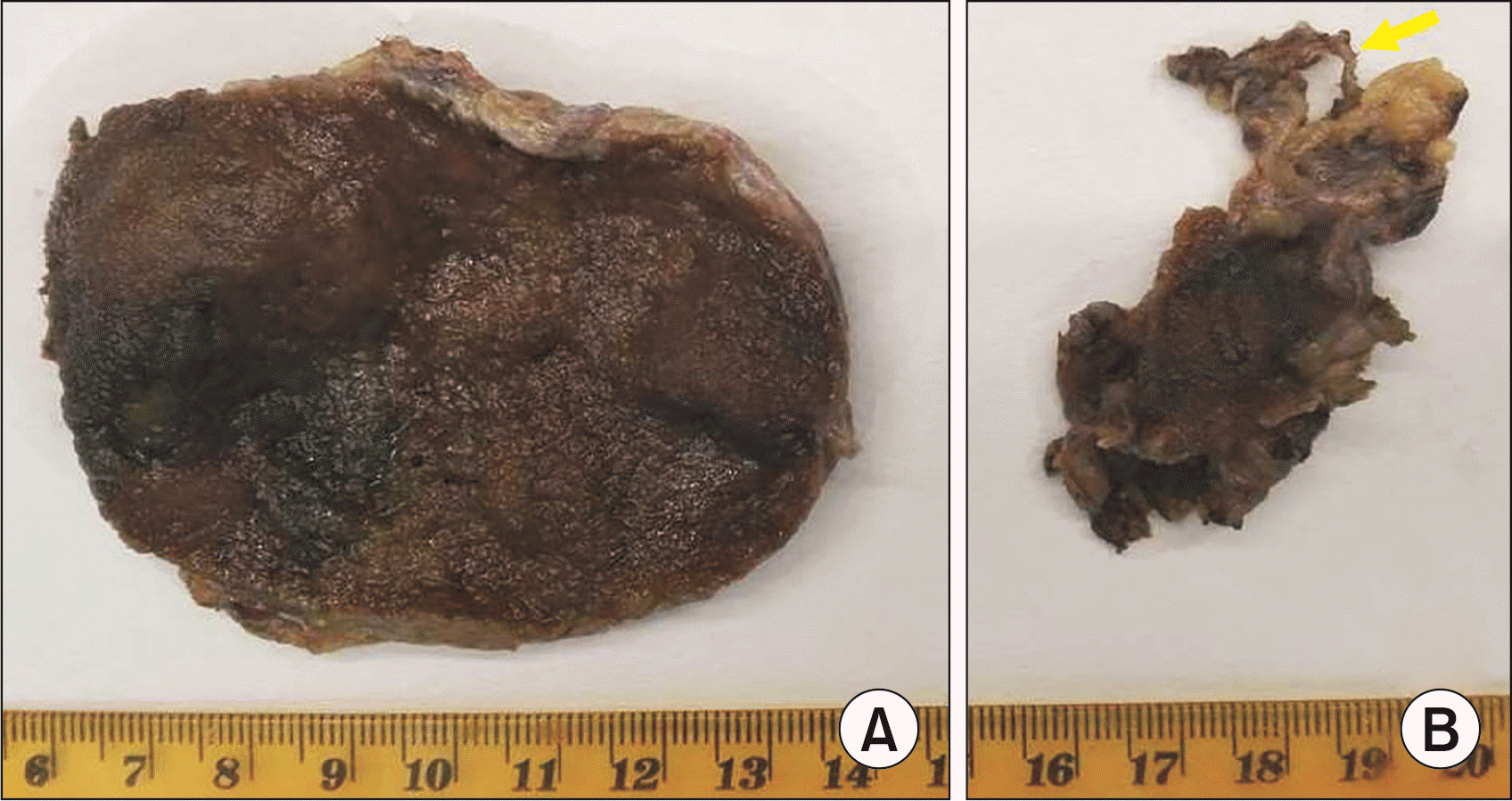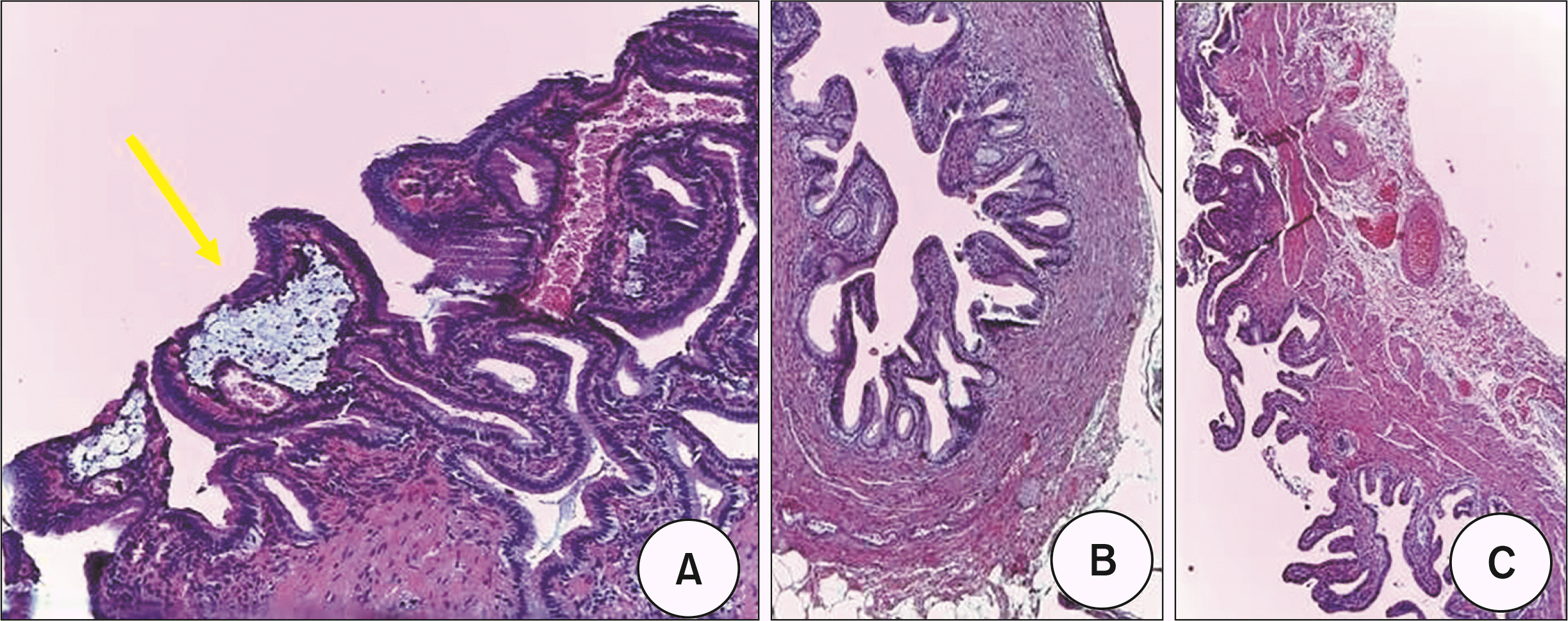1. Singham J, Yoshida EM, Scudamore CH. 2009; Choledochal cysts: part 1 of 3: classification and pathogenesis. Can J Surg. 52:434–440. PMID:
19865581. PMCID:
PMC2769090.
2. Babbitt DP. 1969; [Congenital choledochal cysts: new etiological concept based on anomalous relationships of the common bile duct and pancreatic bulb]. Ann Radiol (Paris). 12:231–240. Multiple languages. PMID:
5401505.
3. Hosoki T, Hasuike Y, Takeda Y, Michita T, Watanabe Y, Sakamori R, et al. 2004; Visualization of pancreaticobiliary reflux in anomalous pancreaticobiliary junction by secretin-stimulated dynamic magnetic resonance cholangiopancreatography. Acta Radiol. 45:375–382. DOI:
10.1080/02841850410005462. PMID:
15323388.
4. Spitz L. 1977; Experimental production of cystic dilatation of the common bile duct in neonatal lambs. J Pediatr Surg. 12:39–42. DOI:
10.1016/0022-3468(77)90293-7. PMID:
833713.
5. Kusunoki M, Saitoh N, Yamamura T, Fujita S, Takahashi T, Utsunomiya J. 1988; Choledochal cysts. Oligoganglionosis in the narrow portion of the choledochus. Arch Surg. 123:984–986. DOI:
10.1001/archsurg.1988.01400320070014. PMID:
3395242.
6. Ponce J, Garrigues V, Sala T, Pertejo V, Berenguer J. 1989; Endoscopic biliary manometry in patients with suspected sphincter of Oddi dysfunction and in patients with cystic dilatation of the bile ducts. Dig Dis Sci. 34:367–371. DOI:
10.1007/BF01536257. PMID:
2920642.
7. Gigot J, Nagorney D, Farnell M, Moir C, Ilstrup D. 1996; Bile duct cysts: a changing spectrum of presentation. J Hep Bil Pancr Surg. 3:405–411. DOI:
10.1007/BF02349784.
10. Alonso-Lej F, Rever WB Jr, Pessagno DJ. 1959; Congenital choledochal cyst, with a report of 2, and an analysis of 94, cases. Int Abstr Surg. 108:1–30. PMID:
13625059.
11. Todani T, Watanabe Y, Narusue M, Tabuchi K, Okajima K. 1977; Congenital bile duct cysts: classification, operative procedures, and review of thirty-seven cases including cancer arising from choledochal cyst. Am J Surg. 134:263–269. DOI:
10.1016/0002-9610(77)90359-2. PMID:
889044.
12. Soares KC, Arnaoutakis DJ, Kamel I, Rastegar N, Anders R, Maithel S, et al. 2014; Choledochal cysts: presentation, clinical differentiation, and management. J Am Coll Surg. 219:1167–1180. DOI:
10.1016/j.jamcollsurg.2014.04.023. PMID:
25442379. PMCID:
PMC4332770.
13. Darnis B, Mohkam K, Cauchy F, Cazauran JB, Bancel B, Rode A, et al. 2018; A systematic review of the anatomical findings of multiple gallbladders. HPB (Oxford). 20:985–991. DOI:
10.1016/j.hpb.2018.04.002. PMID:
29887260.
14. Kumar S, Kumar A, Singh VP. 2021; Gallbladder duplication in a child with choledochal cyst: a rare surgical surprise. BMJ Case Rep. 14:e245109. DOI:
10.1136/bcr-2021-245109. PMID:
34315757.
15. Badebarin D, Aslanabadi S, Teimouri-Dereshki A, Jamshidi M, Tarverdizadeh T, Shad K, et al. 2017; Different clinical presentations of choledochal cyst among infants and older children: a 10-year retrospective study. Medicine (Baltimore). 96:e6679. DOI:
10.1097/MD.0000000000006679. PMID:
28445267. PMCID:
PMC5413232.
17. Senthilnathan P, Patel ND, Nair AS, Nalankilli VP, Vijay A, Palanivelu C. 2015; Laparoscopic management of choledochal cyst-technical modifications and outcome analysis. World J Surg. 39:2550–2556. DOI:
10.1007/s00268-015-3111-8. PMID:
26067634.
18. Liu DC, Rodriguez JA, Meric F, Geiger JL. 2000; Laparoscopic excision of a rare type II choledochal cyst: case report and review of the literature. J Pediatr Surg. 35:1117–1119. DOI:
10.1053/jpsu.2000.7840. PMID:
10917310.
19. Hwang DW, Lee JH, Lee SY, Song DK, Hwang JW, Park KM, et al. 2012; Early experience of laparoscopic complete en bloc excision for choledochal cysts in adults. Surg Endosc. 26:3324–3329. DOI:
10.1007/s00464-012-2299-z. PMID:
22549376.
21. López-Marcano A, de la Plaza-Llamas R, Ramia JM, Al-Shwely F, Gonzales-Aguilar J, Medina Velasco A. 2017; Laparoscopic approach to the treatment of type II choledocal cysts. Gastroenterol Hepatol. 40:678–680. DOI:
10.1016/j.gastrohep.2016.09.003. PMID:
27919528.






 PDF
PDF Citation
Citation Print
Print





 XML Download
XML Download